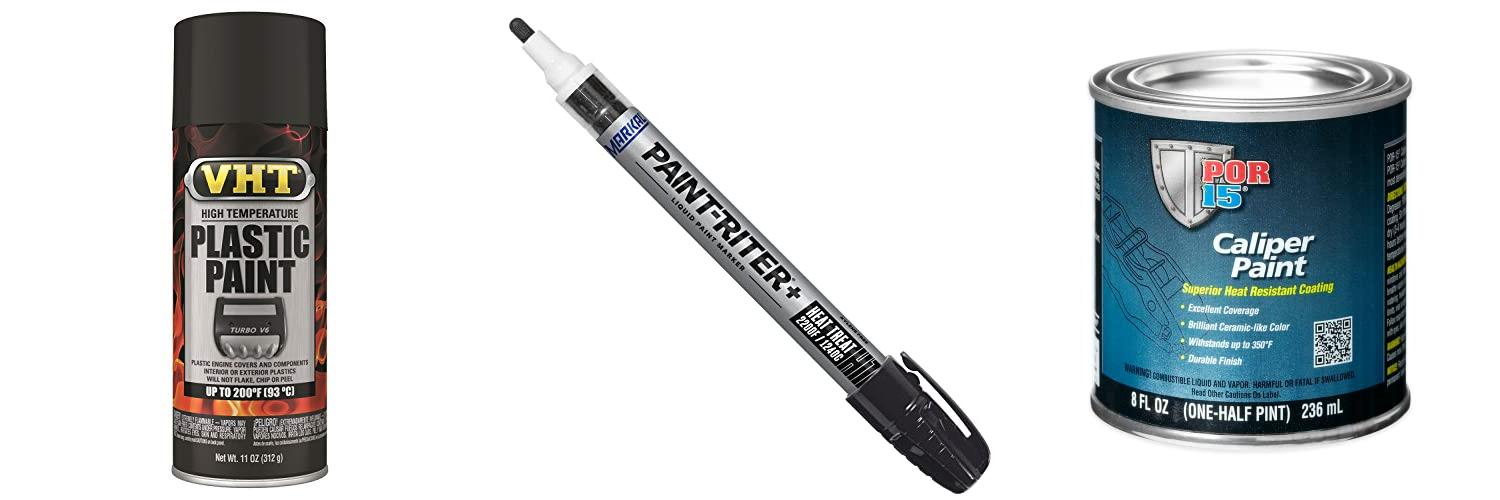Have you ever seen a car with a perfect paint job, gleaming in the sunlight? It’s a beautiful sight! But did you know that the temperature plays a big part in how that paint looks? Getting the temperature right is super important when you paint a car. If the temperature is wrong, your paint job might end up with bubbles, drips, or a dull finish. That’s a real bummer after all the work you put in!
Choosing the right temperature to paint your car can be tricky. There are so many things to think about! You need to know the best temperature for the paint, the room, and even the car itself. Picking the wrong temperature can lead to wasted paint, extra work, and a paint job that doesn’t look its best. This blog post will help you avoid these problems.
We’re going to break down everything you need to know about temperature and car painting. You’ll learn the ideal temperature ranges, how to control the temperature, and how to fix problems caused by the wrong temperature. By the end, you’ll be ready to paint your car like a pro! Let’s dive in and learn the secrets to a perfect paint job!
Our Top 5 Temperature To Paint Car Recommendations at a Glance
Top 5 Temperature To Paint Car Detailed Reviews
1. VHT Duplicolor ESP820007 Black High Temperature Plastic Paint
Rating: 8.8/10
Need to give your plastic engine parts a new look? The VHT Duplicolor ESP820007 Black High Temperature Plastic Paint is a great choice. This special paint is made to handle high heat. It is perfect for cars and trucks. It’s easy to use and gives a tough, lasting finish.
What We Like:
- The paint can handle heat up to 200°F (93°C).
- You don’t need to sand the plastic first.
- The paint won’t chip or peel.
- It dries quickly, so you don’t have to wait long.
- This paint works on both the inside and outside of your car.
- It is made by VHT, a trusted name in car paint.
What Could Be Improved:
- The product description doesn’t specify if it is UV resistant.
- The color selection is limited.
This VHT paint is a good option for car owners. It is a simple way to make your engine parts look better.
2. Markal 97303 – Paint- Riter+ Heat Treat -Fast-Drying Liquid Paint Marker for High-Temperature Resistance- Can Withstand Temperature of up to 2
Rating: 8.8/10
The Markal 97303 Paint-Riter+ Heat Treat marker is made for tough jobs. It’s a fast-drying, liquid paint marker. This black marker is designed to withstand extreme heat. It can handle temperatures up to 2,200°F (1,204°C). This is thanks to its special PrismaLock technology. This marker is perfect for marking metal, glass, and ceramics.
What We Like:
- The marker dries quickly.
- It can handle very high temperatures.
- The colors last a long time.
- It works on many different surfaces.
- It is great for heat treating, metal production, and welding.
What Could Be Improved:
- The price could be a little lower.
- The marker only comes in black.
The Markal 97303 Paint-Riter+ Heat Treat marker is a good choice for high-heat applications. It is a reliable tool for marking in tough industrial environments.
3. POR-15 Red Caliper Paint – 8 fl. Oz.- Superior Heat Resistant Coating – High Temperature Brake Caliper Paint
Rating: 9.3/10
Give your car’s brakes a fresh look with POR-15 Red Caliper Paint! This paint is made to handle high heat. It creates a strong, pretty coating that makes your calipers look great. The paint comes in 5 cool colors and can handle heat up to 350°F. It also fights off brake dust, so your calipers stay clean. Follow the easy steps for the best results. This paint is trusted by car fans and pros alike to keep your brakes looking and working great.
What We Like:
- It’s made for high heat.
- It has a tough, long-lasting finish.
- It comes in cool colors.
- It resists brake dust.
- It can stop rust and make your calipers last longer.
What Could Be Improved:
- You need to use a 3-step system for the best results. This takes extra time.
POR-15 Red Caliper Paint is a good choice if you want to make your car’s brakes look better. It protects your calipers and keeps them looking great for a long time.
4. SCUARI Touch Up Paint Pen
Rating: 8.8/10
The SCUARI Touch Up Paint Pen is a handy tool for car owners. It helps fix scratches on your car. This paint pen is designed to make those annoying scratches less noticeable. It is a simple way to protect your car from rust and keep it looking good. This is a good product for car enthusiasts who want to save money.
What We Like:
- It helps remove scratches and repair paint.
- The pen is easy to use. You can do it yourself.
- It dries quickly, so you don’t have to wait long.
- The pen works on many different car parts, like doors and bumpers.
- The pen comes in different colors to match your car.
What Could Be Improved:
- It might not make the scratches completely disappear.
- You need to make sure the color matches your car.
This touch-up paint pen is a good solution for small scratches. It is an easy and affordable way to keep your car looking its best.
5. FIXEZPRO Black Touch Up Paint for Cars
Rating: 8.5/10
Is your car covered in unsightly scratches? The FIXEZPRO Black Touch Up Paint is here to help! This car paint scratch repair pen is designed to quickly and easily fix scratches, chips, and scuffs on your vehicle. It’s a simple way to make your car look its best. The pen is made to match most black car paint.
What We Like:
- Quick and effective repair for scratches and chips.
- Provides long-lasting protection against rust with its waterproof and UV-resistant formula.
- Easy to use, even for beginners, saving you time and money.
- The 2-in-1 design has a metal tip and brush for different scratch sizes.
- Can be used on many surfaces, like rims, bikes, and furniture.
- Comes with after-sales support to help with any issues.
What Could Be Improved:
- Color match may vary slightly depending on the car’s paint.
- Practice may be needed to get the best results.
The FIXEZPRO Black Touch Up Paint is a handy tool for any car owner. It’s a simple and effective way to keep your car looking great.
Temperature To Paint Car: A Buying Guide
Painting your car can be a fun project. But, you need to get it right. The temperature is super important. This guide will help you choose the right temperature to paint your car.
Key Features to Look For
You need to watch out for important things. These things will help you paint your car well.
- Temperature Range: You will need to know the ideal temperature range. Most paints work best between 65°F and 85°F (18°C and 29°C). Make sure your area can stay within this range.
- Humidity Control: High humidity is bad. It can mess up the paint. Look for a way to control humidity. This might be a dehumidifier.
- Ventilation: Paint fumes are not good to breathe. You need good ventilation. This can be fans or an exhaust system.
- Lighting: You need to see what you are doing. Good lighting is a must. You need to see the paint clearly.
Important Materials
You need the right stuff. These items help you paint your car.
- Paint: You need to choose the right paint for your car. Follow the paint’s instructions.
- Primer: Primer helps the paint stick. It is a base layer.
- Spray Gun: A spray gun sprays the paint evenly. Choose a good one.
- Masking Tape: This helps you keep paint off of areas you don’t want to paint.
- Protective Gear: Wear a mask, gloves, and eye protection. This keeps you safe.
Factors That Improve or Reduce Quality
Some things make the paint job better or worse. Here’s what you need to know:
Improves Quality:
- Proper Temperature: Staying in the ideal temperature range is key.
- Clean Surface: The car must be clean. Wash and dry it before painting.
- Good Lighting: See what you are doing! Good lighting helps a lot.
- Slow, Even Coats: Don’t rush. Apply thin, even coats of paint.
Reduces Quality:
- Too Hot or Cold: Paint can bubble or not dry right.
- Dust and Debris: Dust ruins the finish. Keep your area clean.
- Humidity: High humidity can cause problems.
- Rushing the Process: Don’t rush the painting. Take your time.
User Experience and Use Cases
People use temperature control for different reasons. Here are some examples:
- DIY Enthusiasts: Car lovers like to paint their cars at home. They use temperature control to get professional results.
- Small Body Shops: Small shops need to paint cars. They use temperature control to get good paint jobs.
- Restoration Projects: People who restore old cars need to paint them. Temperature control helps them to get a great finish.
Frequently Asked Questions (FAQ)
Q: What is the best temperature to paint a car?
A: The best temperature range is usually between 65°F and 85°F (18°C and 29°C).
Q: Why is temperature important?
A: Temperature affects how the paint dries and how it looks. It can make or break a paint job.
Q: What happens if it’s too cold?
A: If it’s too cold, the paint might not dry properly. It can sag or run.
Q: What happens if it’s too hot?
A: If it’s too hot, the paint can dry too fast. It can bubble or look uneven.
Q: How do I control the temperature?
A: You can use heaters, air conditioners, or a paint booth with climate control.
Q: What is humidity and why is it bad?
A: Humidity is the amount of water in the air. High humidity can cause the paint to look cloudy or dull.
Q: How do I control humidity?
A: You can use a dehumidifier to remove moisture from the air.
Q: What kind of ventilation do I need?
A: You need good ventilation to remove paint fumes. Use fans or an exhaust system.
Q: Can I paint outside?
A: Painting outside is not usually a good idea. The temperature and humidity can change too much. Also, dust and bugs will be a problem.
Q: How long does it take for the paint to dry?
A: Drying time depends on the paint and the conditions. Read the paint can for instructions.
In conclusion, every product has unique features and benefits. We hope this review helps you decide if it meets your needs. An informed choice ensures the best experience.
If you have any questions or feedback, please share them in the comments. Your input helps everyone. Thank you for reading.

Hey there, My name is Joe Martin & I’m the author of OffroadersGuild.com. I’ve been hitting the dirt for a while now. I’ve been off-roading in all sorts of vehicles, from Jeeps to trucks and everything in between.
I’ve also built and modified a few off-road vehicles of my own, so I know what works and what doesn’t when it comes to upgrading and modifying off-road vehicles. I started this website to share my experience and help others get the most out of their off-roading adventures. Let’s hit the trails!






